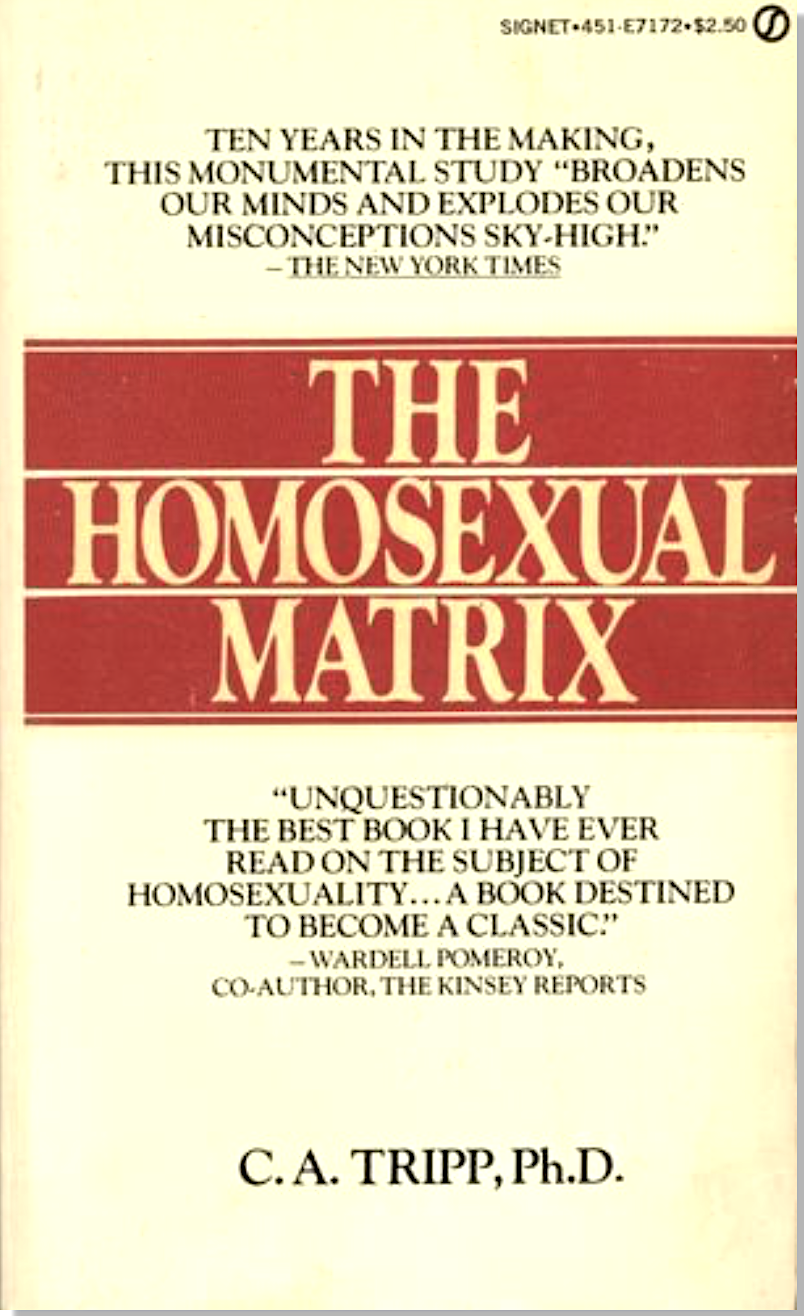Editor’s Note: In the last issue, Part 1 of this essay discussed the collaboration of renowned sex researcher Alfred Kinsey and the budding sexologist C.A. Tripp, starting in the late 1940s. Tripp was openly gay and went on to publish, in 1975, a book titled The Homosexual Matrix, which became a sensation of the Gay Liberation era but was also controversial for some of the positions it advanced. Tempers flared among LGBT intellectuals, so the author of this piece decided to invite about fifteen academics to meet with Tripp in a spacious New York City apartment. Part 2 picks up with an accounting of these discussions.

THE FIRST GATHERING to discuss The Homosexual Matrix, which was held on February 2, 1976, was a good deal less fraught than my confrontation with Arno Karlen, though hardly a love fest. Over a five-hour period, most of the hot-button topics relating to sexuality came up for discussion, sometimes in heated exchanges. I found that I liked Tripp the man better than I had expected to, since most of the advance reports had described him as arrogant, closed-minded, and “difficult.” The peremptory note did unmistakably sound now and then, but so did his warmth and charm—though I didn’t entirely trust the charm, which seemed to be in the service of evasion, at which Tripp proved exceedingly skillful.
The group of invitees was bright, well-informed, and tenacious in their criticism (a match for Tripp’s tenacity in ignoring it). None of the objections raised to his views seemed to make a dent, though I thought much of the criticism was telling. I myself pressed him on the lack of supporting evidence for some of his claims, even while acknowledging that the imaginative insights I most admired about the book were in pleasant contrast to the academy’s notion of what constituted “true” scholarship. “For God’s sakes, Duberman,” Tripp later told me privately. “Kinsey didn’t base his conclusions on those umpteen thousand interviews, but on his direct observations watching sex—including watching me and a long line of lovers!” Maybe so, I rather stumblingly replied—Tripp, after all, had worked directly with Kinsey—but the book’s paucity of citations made it difficult to defend his work to literal-minded scholars.
To my mind, the most serious objection raised that first afternoon concerned Tripp’s claim that sex is “focal” for males, but innately “peripheral” for females. He offered as confirmation the many consultations he’d had with female researchers about his conclusions. Annoyed at his presumptive tone, I was among those who pointed out that “we all choose our consultants, and consciously or not go to experts who we know or sense hold views comparable to our own.” The anthropologist Edgar Gregersen (who would later write Sexual Practices) added that the anthropological literature did not confirm Tripp’s sweeping statements on female sexuality: Edgar gave Mangaia as an example. It was a culture where all women have orgasms—because they demand them, not because of male desire, attentiveness, or proficiency.
Tripp was a good deal more persuasive—this was 1976, before the advent of the trans movement—in his insistence that a majority of “transvestites” were not homosexual (and vice versa).
This is the second of two parts. Part 1 appeared in the previous issue.
Martin Duberman’s recent books include Andrea Dworkin: The Feminist as Revolutionary and Has the Gay Movement Failed?







